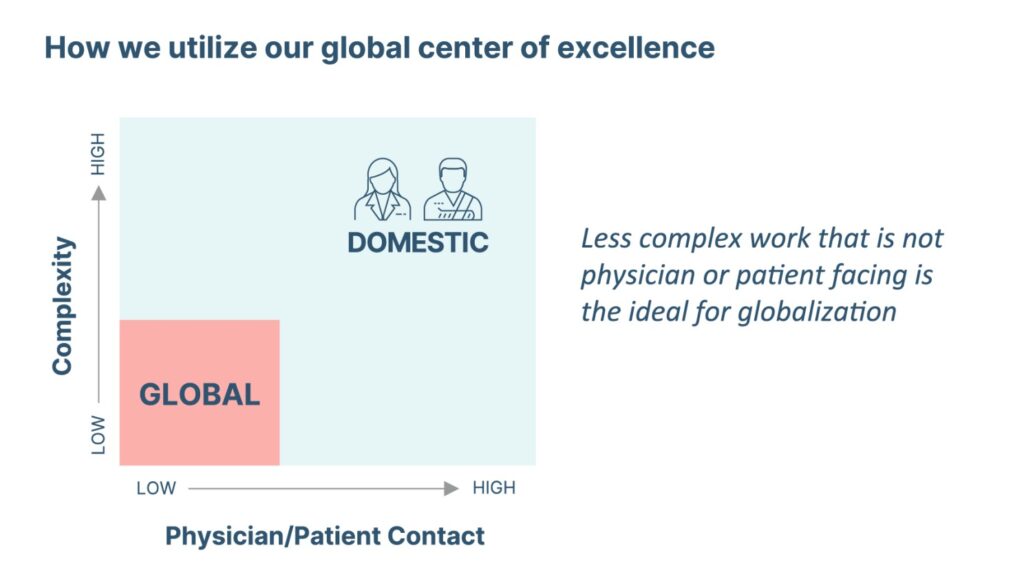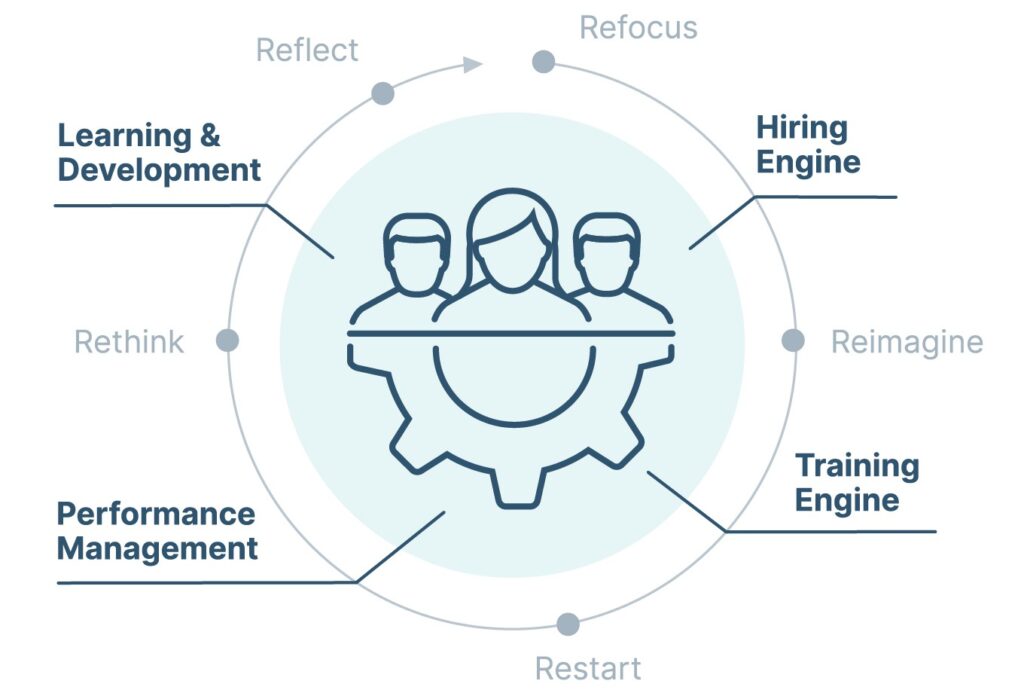Laxmi Patel | Chief Strategy Officer
Given the financial and staffing challenges healthcare is facing today, globalization is here, and it’s here to stay. Globalization has gotten a bad rap for many years, but when fully understood and employed in the right areas of your organization, it can benefit patients and your bottom line. As healthcare organizations review their financial health and balance the scarcity of resources with their mission to deliver quality patient care, they must consider the utilizing global resources. Doing so allows organizations to focus and build on their strengths and outsource the areas where they don’t have the expertise, time, or resources to manage.
A globalization strategy can reduce costs and help overcome staffing shortages, allowing for critical jobs to be made more meaningful and be retained domestically while more technical work is offloaded to expertly trained global teams. In specific regard to revenue cycle management (RCM) operations, globalization results in numerous benefits beyond cost savings, such as a broader approach to revenue cycle management, reduced cost to collect with flexible staffing models and scope focused on the right accounts, and decreased recruiting and retention challenges by sourcing skilled resources from a global talent pool.
To ensure success when employing global resources, especially within the revenue cycle, a Global Center of Excellence (COE) must be established. A Global COE is responsible for adherence to policy and procedure and the adoption of best practices. They provide resources, methodologies, and executions to ensure revenue cycle teams adhere to the most up-to-date practices, embracing technology most efficiently, and securing outcomes to improve financial health. They address operational inconsistencies and identify trends across payers to expertly resolve accounts. Global COEs also provide lower compliance risk and improved reimbursement by promoting a consistent QA program. Lastly, they provide large-scale, in-depth training programs to ensure the same understanding and level of expertise across the organization.
Steps to Take to Successfully Establish a Global Center of Excellence
Global COEs should be developed and maintained using a strategic approach that focuses on process, technology, and people. To ensure the utilization of global resources is successful, there are steps healthcare organizations should think through, such as:
1. Strategically scope areas of your revenue cycle that you will outsource to global resources.
What elements of your RCM program can be effectively globalized, and which cannot? Consider all the interaction points and the complexity of work when scoping areas for global outsourcing. For example, clinical denials and complex AR is difficult to globalize.
The chart below demonstrates which work should be considered for globalization.

2. Establish a leadership team who will sponsor and drive the Center of Excellence including experienced revenue cycle management professionals, technical experts, and project managers.
3. Develop a quality assurance program that includes regular staff performance audits.
4. Create a culture of continuous improvement by sharing best practices across the organization and with external stakeholders.

How to Measure Success
To determine the ongoing success of your revenue cycle efforts, managed both globally and domestically, you must define what success looks like and establish scorecard metrics to monitor the performance of the revenue cycle management processes. At a tactical level, a set of high-level benchmarks must be established and consistently measured. These metrics can fluctuate based on the specific healthcare organization and its needs, and not only inform the overall health of revenue cycle operations but also provide feedback as to the success of the Global COE and inform its focus and training plan for the future. Some common KPIs that can be used to measure the effectiveness of your revenue cycle management include:
Days in Accounts Receivable (AR): Average number of days it takes to collect payment from insurance companies and patients. It is calculated as the total AR divided by the average daily charges.
Denial Rate: Percentage of claims that are denied by insurance companies. It is calculated as the total number of denied claims divided by the total number of claims submitted.
Net Collection Rate: Percentage of billed charges that are collected after deducting contractual adjustments and write-offs. It is calculated as the total payments received divided by the total billed charges.
Clean Claims Rate: Percentage of claims that are processed and paid by insurance companies without any errors or rejections. It is calculated as the total number of clean claims divided by the total number of claims submitted.
Cost per Claim: Cost of processing each claim. It is calculated as the total cost of revenue cycle operations divided by the total number of claims processed.
Patient Satisfaction: Satisfaction levels of patients with the billing and payment process. It is measured through surveys and feedback mechanisms.
By monitoring these KPIs regularly, your organization can gain insights into the strengths and weaknesses of your revenue cycle management operations and identify areas for continuous improvement.




